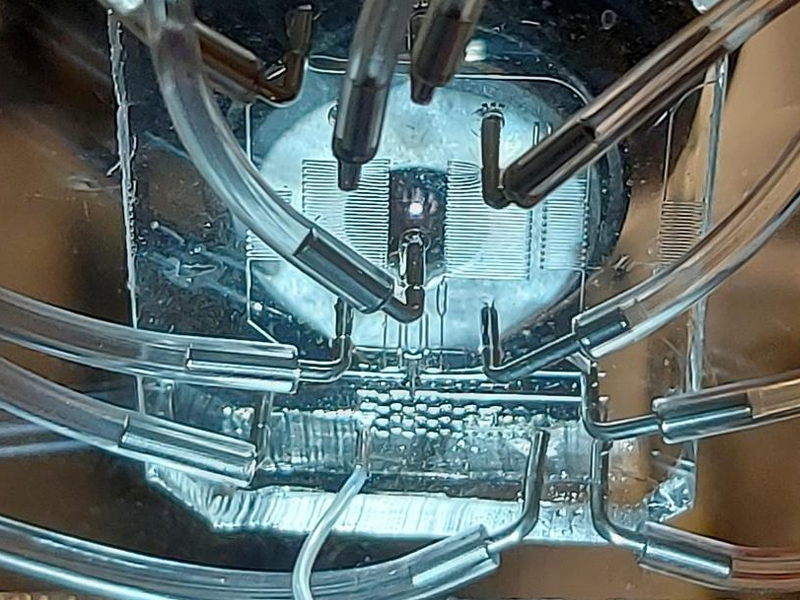Service Hotline:
+86-20 34438810
The new disco method enables scrna SEQ single cell sequencing to process samples effectively with fewer cells
- Categories:News
- Author:
- Origin:
- Time of issue:2022-02-18
- Views:0
(Summary description)Single cell RNA sequencing, or scrna SEQ for short, is a technology that allows scientists to study gene expression in single cells in a mixed population, which is the way all cells exist in human tissues.
The new disco method enables scrna SEQ single cell sequencing to process samples effectively with fewer cells
(Summary description)Single cell RNA sequencing, or scrna SEQ for short, is a technology that allows scientists to study gene expression in single cells in a mixed population, which is the way all cells exist in human tissues.
- Categories:News
- Author:
- Origin:
- Time of issue:2022-02-18
- Views:0
Single cell RNA sequencing, or scrna SEQ for short, is a technology that allows scientists to study gene expression in single cells in a mixed population, which is the way all cells exist in human tissues.
As a part of the large family of single cell sequencing technology, scrna SEQ involves capturing the RNA of a single cell and sequencing it after multiple molecular transformation reactions. Since RNA is an intermediate step from DNA genes to proteins, it provides a description of which genes are active and which are not active in a particular cell.
Because scrna SEQ captures the activity of all genes in the cell genome and captures thousands of genes at a time, it has become the gold standard for defining cell state and phenotype. Such data can reveal rare cell types in cell populations, even types never seen before.
But scrna SEQ is not only a tool for basic cell biology; It is widely used in medical and pharmacological research because it can identify which cells in the tissue are actively dividing, or which cells respond to specific drugs or treatments.
These single-cell methods have changed our ability to analyze cell characteristics between systems.
However, the problem encountered by researchers is that scrna SEQ is currently customized for large unit input.
This is not a small problem because the scrna SEQ method requires more than 1000 cells to make useful measurements. This makes them inefficient and expensive to process small individual samples (such as small tissue or patient biopsy). These samples often need to be solved by loading a large number of samples, resulting in chaotic mosaic cell population readings.
The disco solution
Bues, a researcher at the Swiss Federal Institute of technology EPFL, and a team composed of Marjan bio č anin and Joern pezoldt have now developed a new method to allow scrna SEQ to process samples effectively with fewer cells. This method, published in the Journal of natural methods, is called disco, deterministic, mRNA capture bed and cell co encapsulation dropping system.

Unlike single-cell methods that usually rely on passive cell capture, disco uses machine vision to actively detect cells and capture them in oil droplets and beads. This method allows continuous operation and makes the scaling and serial processing of cell samples highly cost-effective.
As shown in the study, disco has accurate particle and cell positioning functions, and controls droplet sorting by combining machine vision and multi-layer microfluidic. All of these allow continuous treatment of low input single-cell suspensions with high capture efficiency (more than 70%) at a rate of up to 350 cells per hour.
To further demonstrate disco's unique function, the researchers tested small chemical sensory organs and single intestinal crypts and organoids in Drosophila. The latter is a small tissue grown in a Petri dish, which is very similar to the actual organ. EPFL has been in a leading position in this field for many years.
The researchers used disco to analyze individual gut organoids at different stages of development. This method depicts the picture of organoid heterogeneity and detects various organoid subtypes, some of which have never been determined before.
This work demonstrates disco's unique ability to provide high-resolution snapshots of cell heterogeneity in small and individual tissues.
Scan the QR code to read on your phone
Relevant information

+86-20 34438810
(Service Hotline)
Tel: +86-20-34438810
E-mail:sales@magigen.com
Add:Unit 503-504, Building 3 Standard Property Unit 4, No.12 Luoxuan 3th Road, International Bio Island, Guangzhou, China
(Service Hotline)

Copyright © 2022 美格生物 All Rights Reserved.
粤ICP备20006980号 技术支持:中企动力 广州






